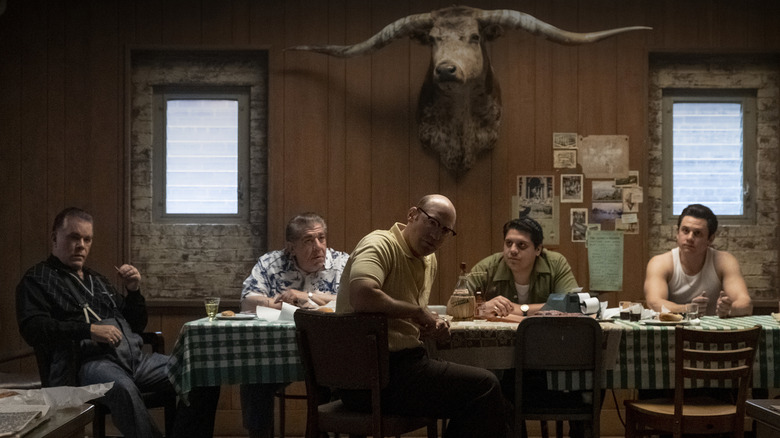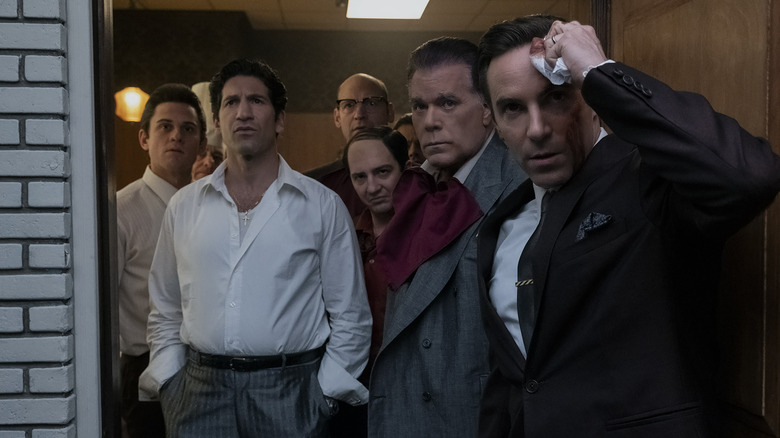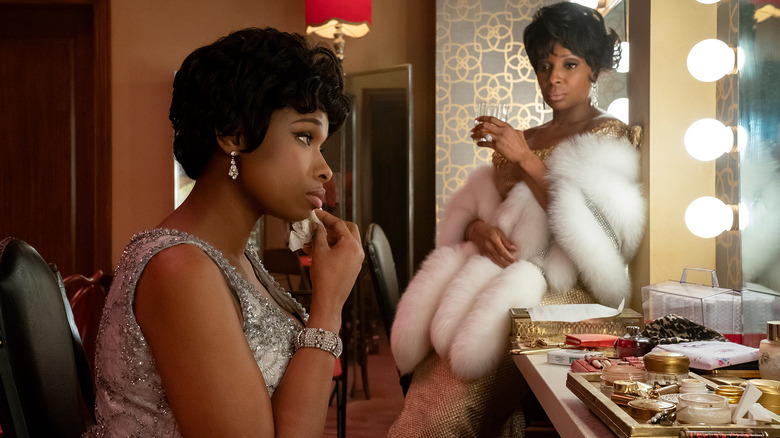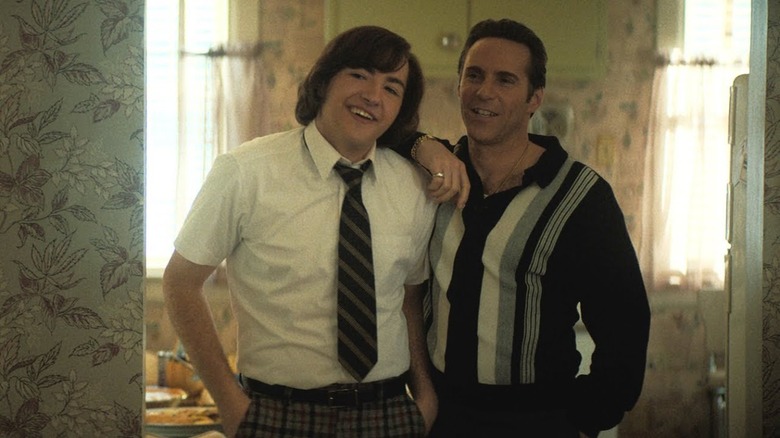The Many Saints Of Newark Cinematographer Treated 'No Bullsh*t' As A Mantra [Interview]
Kramer Morgenthau has had a remarkable year. The cinematographer, who's currently in Boston working on the musical "Spirited," shot both "Respect" and "The Many Saints of Newark." Both period pieces are striking contrasts, expressing a wide range in visual storytelling. They're epics covering years in time, and yet, have an intimacy about them.
The Aretha Franklin biopic wasn't the only movie that had Morgenthau thinking about music, though. The cinematographer, who's shot many music videos and docs throughout his career, always has music on his mind when he's telling a story. As he told us during a recent interview, it's all about pacing and rhythm, and as Miles Davis would say, leaving space between the notes.
"What in the hell is going on? What are these crazy people doing?"
How's your shoot going?
It's going extremely well. Here in Boston shooting nights. I'm just kind of waking up from that, and it's a musical called "Spirited." A lot of fun, a lot of big song and dance numbers. Shooting in the snow at night on a street. Christmas and the whole thing, it's just magical kind of Hollywood experience. Ironically, we're summertime. Making snow, civilians walk by on the street and they look and they're just like, "What in the hell is going on? What are these crazy people doing?"
I was just watching the music video for The Weeknd that you did. When you do musical numbers, do you think back to your music videos that you shot and what they taught you?
Absolutely. Music has always been part of my life and I actually started out wanting to be a musician. A lot of my early work was music documentaries. I think it's an important part of being a cinematographer that, even if there's no music, there's something musical and there's rhythm, and there's a timing to the way an actor plays in the frame or the way a dancer moves in the frame and the way the camera dances with an actor. It's all dear to my heart. Everything from The Weeknd music video to doing something with a jazz artist like Joe Henderson when I was starting out in the nineties, music is all fused together. It's all the same side of the brain.
So, with "Respect," how was your camera responding to the rhythm of Aretha Franklin and her music?
Shooting "Respect" was a dream project for me. Always loved the music and I would never have predicted I'd be shooting a biopic about somebody as iconic and as magical and brilliant as Aretha Franklin. It starts with the music and engineering, how the camera is integrated with it in a, for lack of a better word, musical way. It was capturing Jennifer Hudson's performance and having the camera be a part of the performance, being sort of immersive and at the same time not intrusive. Keeping the camera flowing and moving with the music, and telling the story even of the song.
Being inside of the song and inside the lyrics, inside of the experience of her life, going from a childhood gospel singer to being an RnB singer and an icon, and a huge part of the 1960s and seventies at a very young age. The film only covers a very short period of her life, but it's the biggest height of her stardom, which she achieved by the age of 30. It's just an incredible life, and hopefully, we captured just even a sliver of it.
Did you want to avoid certain biopic cliches?
A biopic is a genre that everybody is familiar with and in some ways it's handcuffs on a filmmaker because you have to tell certain things in a certain way. But at the same time, we try to transcend those conventions and visually try to transcend it and dig into the feeling of the music and being there and the time period. And doing things like shooting with 16 millimeter film to recreate some of the news reel and the documentary at the end of the film, which was "Amazing Grace."
"No bullsh*t was a mantra..."
"The Many Saints of New York" and "Aretha," of course, are both period pieces. How'd you want visualize those similar times but with different approaches?
They both take place in the 1960s and seventies, but they couldn't be more different films and different approaches. "Respect" wanted to feel like a larger than life experience. And at the same time, really feel some of the trauma in her life that fed her brilliance and the emotion of her music, and the ability for an audience to connect to her and trying to get inside of her. Versus "Many Saints of Newark," we did want it to feel like of the time, but didn't make it some sort of like golden, crispy, sepia toned, honey dipped film. It is more desaturated. We did emulate some of the film stocks of the period.
Which film stocks?
Ektachrome and kodachrome. We had lookup tables that recreated that, and we photographed it digitally, but we added a lot of film emulation texture and grain and curves that recreated its own vibe for "Newark."
David Chase said he appreciated what you and Alan Taylor did, that it's "no bullsh*t." Is that an accurate description for you?
I think that David's comment about no bullsh*t was a mantra in a way for the way we approached the film. It's very, very classical filmmaking. It's very non-intrusive, but in other ways, we lead into a sense of composition. It was the classical approach, meaning classical Hollywood in a way, letting a frame play and characters play in the shot in a way was an homage to the show. It was David's mantra on the show, which was kind of nothing flashy. At the same time, with the lighting and the colors and the composition, it's not a documentary. There's a real considerate approach to the style, but it's a lighter footprint and it's a more subtle thing.
There's just a vibe in the lighting and in the art direction, and in the costumes that you feel the air in the night club or in the houses or Johnny Soprano's and Olivia's place where Tony grows up. These row houses, there's something oppressive about it in a way. It's this life of growing up in the north ward of New Jersey and trying to find a way to get out, and these working class Italians. Some of them lean into the old country way, which was doing the mob thing and getting into waste disposal business or whatever
For you, what are some choices that would have been intrusive as a cinematographer?
I would say in the case of "Newark," moving the camera when the actors are not moving. Doing more aggressive, stylized camera work where the camera is more subjective doing, again, movement that is not motivated by movement, that calls attention to the camera. In terms of lighting, maybe giant casts of light and extreme darkness where it calls more attention to the light, which I love to do. Some of that is in the film, but we try to choose the moments that vibe with what's happening in the characters at the moment and not just doing it for the sake of doing it, and feeling the pace. It's years and years of doing it and overdoing it and feeling confident enough to underdo it and know that it's going to work.
"It's a complete cheat."
Alan Taylor told me the scenes with characters just sitting at tables are his favorite scenes to shoot. Do you feel similarly?
Some of my favorite shots are these wide shots where you just see the entire ensemble cast playing a frame, kind of like a Dutch master painting. Allowing actors to do a performance driven-film is absolutely a treat to do. If it's nine characters at a dinner table, it's a lot of fun to see characters play. Not do lots of cuts and lots of fancy shots. Let it be minimalist. But at the same time, I'm leaning into deep colors and atmosphere and single source lighting, and texture and grain and contrast.
There are a lot of things happening there that's not just pointing a camera and shooting, but you find other ways of leaning into things to be expressed. In that particular film, it wasn't about 360 camera moves around the actor. As much as I love to do it and was tempted to do it, we were just restraining, restraining, and restraining.
You think about some of the great jazz musicians like Miles Davis, who has a brief moment in the movie where the record album "Kind of Blue" appears, but Miles Davis' brilliance was about the space between the notes. It was not always about the notes, but about space and the silence between the notes. He would play much fewer notes, and he used lots of silence and almost like conversational style of trumpet.
Obviously, you've worked with Alan Taylor before, but you also worked with David Chase closely. How'd that collaboration work between the three of you?
It was an incredible life experience to have. Well, first of all, Alan Taylor and I have 10 years of a body of work at this point. It's my greatest relationship with any director in my life. He is extremely loyal, extremely supportive. I have an amazing relationship with Alan. We barely have to speak. I know what he's doing when he's walking around in the room, and he does these things with his fingers where he is figuring out the shot literally with his fingers. I can read his sign language. I know which side of the line he's trying to approach and what he's thinking about in next shot, how he composes. He's very involved in composition, and in lighting, he's very hands off, completely trusts me with the light. With the composition, we collaborate.
David Chase was a whole new relationship where he's like a godfather of storytelling, of filmmaking. Very intimidating figure because I didn't know him and he's a man of few words. But I got to know him very, very well and kind of have a great friendship with him. He'd steer the ship with just very light adjustments. It wasn't like he was tinkered with the filmmaking. He was the tone master. He always had to make sure that we were getting the tone right. But in terms of like, oh, this shot here, or the light there or that kind of thing, he was not. He was very, very supportive and respectful of our process, me and Alan. And then in terms of story and character and tone, if the shot felt wrong, if the location felt wrong, if it didn't feel like this part of New Jersey, we had a genius guru there that you could go to for guidance and tone and inspiration.
Once he saw what we were doing and he felt like we knew what we were doing, it was not like in any way having two directors. It was very much like television where the writer is there making sure the tone is right. And then the director is executing the vision, and the cinematographer is supporting that and creating the photographic vibe. So it was different than on feature films where the director is the absolute single voice. It was having two voices, but not in contrast with each other. It was kind of like having a conductor and then a soloist.
How'd you approach that final shot in terms of lighting? That was a reshoot, right?
It was added almost a year later. Due to global pandemics and things like that, it was much, much later. The conversations about the mood and the lighting were established already in the first shoot, so we're rebuilding it for the reshoot. And it's a funeral home and it had a very Gordon Willis Godfather-y minimalist single source vibe. Once Alan saw what I was doing, that was end of conversation. It was build an atmosphere where it's a mob funeral in New Jersey in 1967. Go press that button and build that, come on. Make it happen. It was just instinctual, and it was a location, a real funeral home that we shot at originally. And then, the pinky rebuild was against green screen on a sound stage.
Never would've guessed.
It's a complete cheat.



